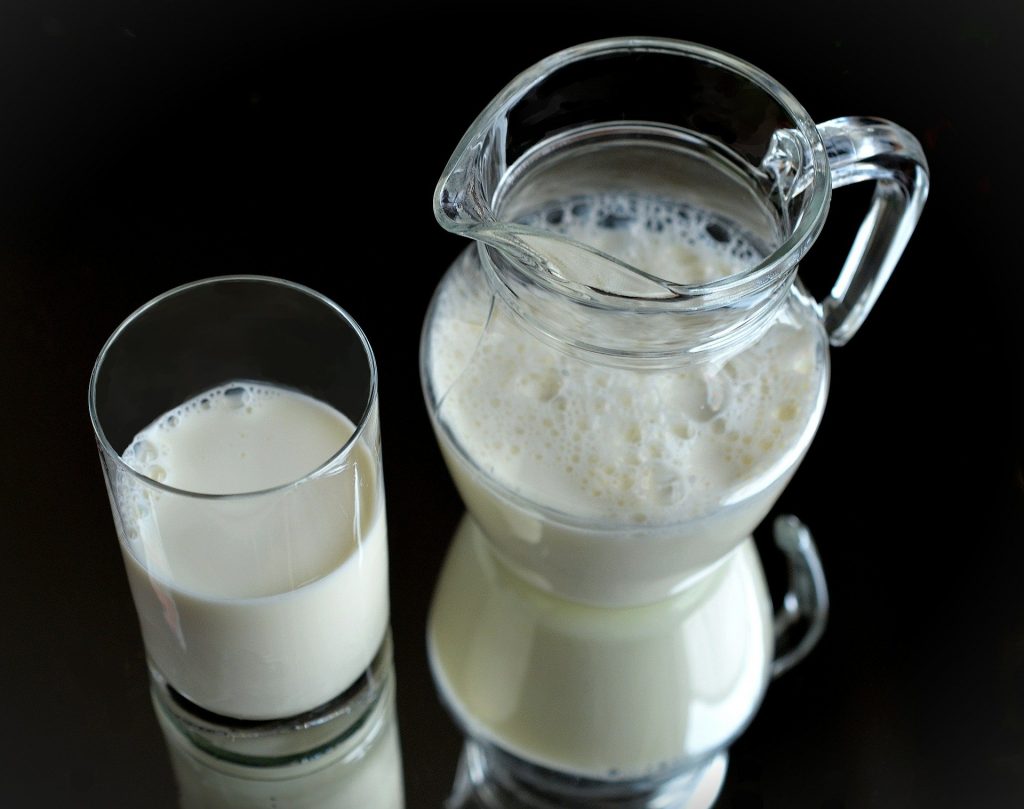Written by Jacob Liu and Edited by Alexander Alva

A glass of warm milk before bed was an integral part of every person’s childhood, right? Well, it is not as common as one might believe. A study published in 2017 revealed that 68% of the world population and 36% of the United States population is lactose intolerant [1]. Lactose intolerance is defined as an impaired ability to digest lactose, a sugar found in milk. Normally, lactose is broken down by the enzyme lactase in the small intestine. However, some individuals are unable to produce a sufficient amount of lactase; they are lactose intolerant [2]. Given a large proportion of lactose-intolerant people and an accompanying global climate crisis that may benefit from limiting resource usage, selection of a milk alternative becomes all the more pressing. By comparing research on the environmental impact of their production and their nutritional values, it becomes clearer on the impacts that each alternative milk—soy, almond, or oat milk—plays for oneself and the environment.
One of the most recognizable milk alternatives, soy milk, naturally contains about as much protein as a cup of cow’s milk per cup at 8 grams per 8 oz. cup [3]. However, soy milk has the highest saturated fat content compared to other plant-based milks per cup, which is only a sixth of the saturated fat in cow’s milk at 3.067 grams per cup [3]. In terms of environmental impact, soy milk uses only 28 liters of water to grow compared to cow’s milk’s annual usage of 628 liters of water, the most efficient among mainstream milk alternatives [4]. This excellent nutritional value, coupled with soy milk’s greatly reduced environmental impact compared to cow’s milk makes it a great contender for the best milk alternative.
For those with soy allergies or who dislike the taste, almond milk is another popular alternative. Made from crushed almonds and water, almond milk is best known for being low in calories, with an unsweetened cup of it typically amounting to a third of cow’s milk [3]. However, this low calorie count does not hold up well in comparison to the environmental impact. Though almond milk has marginally lower carbon emissions and land usage compared to soy and oat milk, it uses over 13 times as much water as soy milk and 7 times as much as oat milk [5]. Almond milk lies at the extremes of low overall nutritional value and comparatively high environmental impact, leading to drawbacks in the consumption of this alternative milk.
Compared to the longstanding popularity of soy and almond milk, oat milk is a relatively new player to the alternative milk scene. Interestingly enough, oat milk has the highest caloric value per cup at 130 kilocalories compared to cow’s milk at 122 kilocalories, a figure that leaves plant-based milks in the dust [3]. In terms of environmental impact, oat milk lies in the middle ground, producing slightly less carbon emissions than soy milk. In addition, oat milk utilizes more land than both other plant-based alternatives and moderately more water than soy milk at 48 liters annually [5]. These factors combined make oat milk the best alternative in terms of the most nutritional value at the lowest all-around environmental impact.
Given the many positive and negative aspects of soy, almond, and oat milk with regard to their respective nutritional values and environmental impacts, there is not an immediately clear answer as to which is the best milk alternative. Depending on which factors one values, each milk can be seen as the best alternative milk in comparison to the others. Ultimately, the decision of which alternative milk is the best is subject comes down to the perspective of the individual regarding which specific nutritional and environmental factors one values more.
References:
- Storhaug, C.L., Fosse, S.K., Fadnes, L.T. (2017). Country, regional, and global estimates for lactose malabsorption in adults: a systematic review and meta-analysis. The Lancet: Gastroenterology & Hepatology, 2:738-746.
- “Lactose Intolerance.” MedlinePlus, U.S. National Library of Medicine, 2020, Accessed 6 Nov. 2020. medlineplus.gov/genetics/condition/lactose-intolerance/.
- Bridges, M., Parrish, C.R. (2018). Moo-Ove Over, Cow’s Milk: The Rise of Plant-Based Dairy Alternatives. Practical Gastroenterology, 42:20-27.
- Poore, J., Nemecek, T. (2018). Reducing food’s environmental impacts through producers and consumers. Science, 360:987-992.
- Haake, Daniela. “Which Milk Has the Smallest Impact on the Planet?” Chartable, Datawrapper, 2019. Accessed 6 Nov. 2020., blog.datawrapper.de/cow-milk-and-vegan-milk-alternatives/.
